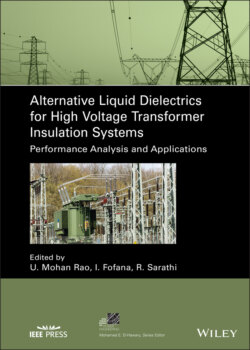Читать книгу Alternative Liquid Dielectrics for High Voltage Transformer Insulation Systems - Группа авторов - Страница 66
2.8 Conclusions and Future Scope
ОглавлениеInsulating liquids form the major part of any insulation system in many types of power apparatus, including transformers, cables, and capacitors. The characteristics of the insulating liquids are different for different applications. MOs are the conventional insulating liquids used in transformers and they have established itself well in this area. They are low‐cost oils with good performance, so for a long time there was no competition to the MO. However, in the recent times, fire safety and environmental concerns have driven the researchers to look for other alternatives to the MO. From the aforementioned observation about the processing and evaluation of NEOs, the following conclusions are summarized:
The petroleum‐based MO has low environmental safety specifications which motivates the scientists for the development of an alternative liquid dielectric for insulation and cooling. Over the years, scientists have found out that the natural ester‐based liquid dielectric is an alternative option to overcome the demerits of petroleum‐based MO.
Natural esters are mostly extracted from the biological seeds such as soybean, pongamia, jatropha, palm fruit, etc., which make them a biodegradable material. Pretreatment of the biological seeds is a mandatory process before extraction of crude natural ester and for better yield.
The extraction of crude oil is divided into two categories, namely mechanical and chemical extraction. Mechanical extraction is used for bulk production of crude oil, whereas chemical extraction is mostly applicable for the laboratory scale. The crude ester oil is considered to be unfit for usage in industrial dielectric liquid applications because of its high viscosity, high acid number, and poor pour point.
Processing of the crude ester oil is required for industrial application. Therefore, the transesterification process is followed for the crude oil to prepare the natural ester for dielectric applications.
In order to ascertain the quality of the natural ester, physicochemical, thermal, and electrical characterization is carried out.
Since natural ester is biodegradable in nature, the chemical and thermal degradation analysis is carried out to understand the degradation behavior of the natural ester.
Postoperative condition of the natural esters in power apparatus are analyzed using the DGA by which incipient faults are detected in the aged oil. These methods include the gas ratio techniques and the Duval’s triangle technique.
So far the dielectric liquid is concerned, natural ester has no hazardous effect to the environment. Therefore, in comparison to the MO, natural ester is considered as a prospective replacement for dielectric applications.
